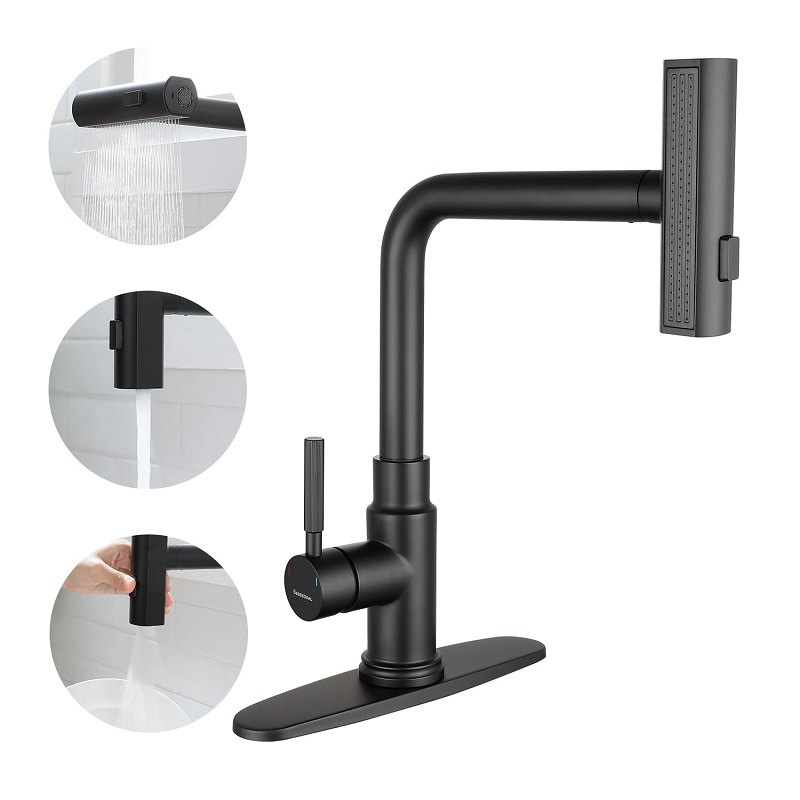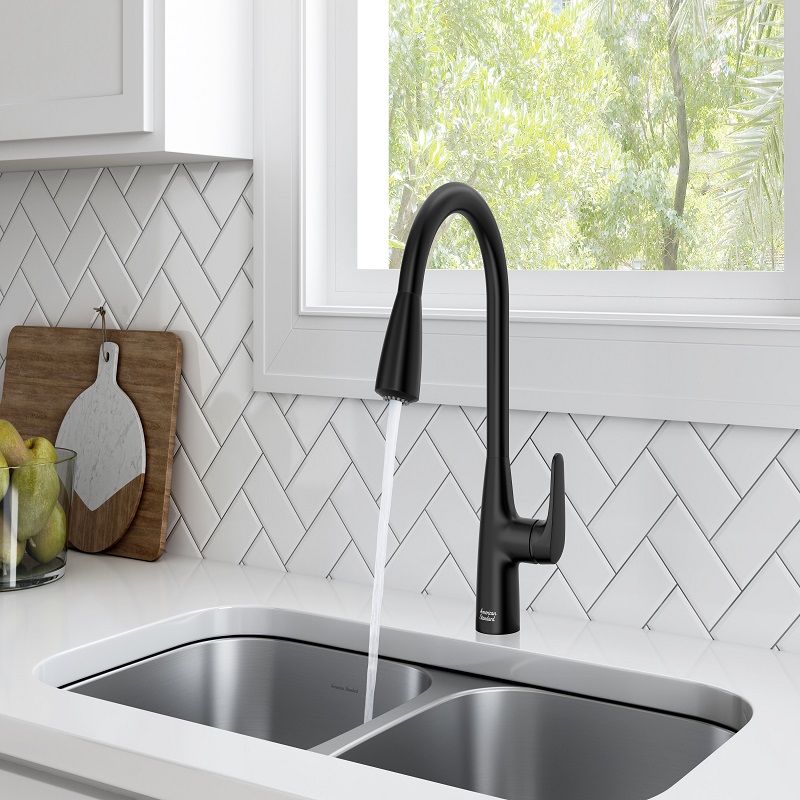Kitchen sink faucets installation can be a relatively simple and straightforward task, but it requires concentration, patience, and a few essential tools. Whether you’re replacing an old faucet or installing a new one, this guide will provide you with step-by-step instructions on how to successfully install a kitchen sink faucet.

Tools and Materials
Before starting the installation process, it’s important to gather all the necessary tools and materials. Here’s a list of what you’ll need:
- New kitchen sink faucet
- Adjustable wrench
- Channel lock pliers
- Pipe wrench
- Basin wrench
- Plumber’s tape
- Plumber’s putty
- Silicone sealant
Now that you have all the required tools and materials, it’s time to begin the installation process.
Preparation
The first step in installing a new kitchen sink faucet is to prepare the area. Start by turning off the water supply to the sink. This can usually be done by locating the shutoff valves underneath the sink and turning them clockwise until they are fully closed. Once the water supply is turned off, turn on the faucet to release any remaining water from the lines.
Next, place a towel or rag in the sink to prevent any small parts from falling down the drain. It is also a good idea to place a bucket under the sink to catch any water that may leak out during the installation process. If you have a garbage disposal, make sure to disconnect the power source to avoid any accidents.
Removing the Old Faucet
Using an adjustable wrench, remove the nuts that secure the old faucet to the sink. Once the nuts are removed, lift the old faucet out of the sink and set it aside. Be careful when handling the old faucet, as there may still be water trapped in the lines.
After removing the old faucet, clean the area around the sink where the new faucet will be installed. Use a rag or towel to wipe away any debris or residue.

Installing the New Faucet
Before installing the new faucet, apply plumber’s tape to the threads of the water supply lines. This will help create a tight seal and prevent leaks. Once the plumber’s tape is in place, position the new faucet on the sink and secure it in place using the nuts provided with the faucet.
It is important to ensure that the faucet is properly aligned and centered before tightening the nuts. Use a basin wrench to tighten the nuts, making sure not to over-tighten them.
Connecting the Water Supply Lines
Once the faucet is securely in place, it’s time to connect the water supply lines. If the new faucet comes with pre-attached supply lines, simply connect them to the corresponding hot and cold water valves underneath the sink. If not, use flexible supply lines and connect them to the faucet using an adjustable wrench.
After connecting the supply lines, turn the water supply back on and check for any leaks. If there are no leaks, turn on the old kitchen faucets and let the water run for a few minutes to flush out any debris or air from the lines.
Sealing and Finishing
To ensure a watertight seal, apply plumber’s putty or silicone sealant around the base of the faucet where it meets the sink. This will help prevent water from seeping underneath the faucet and causing damage to the countertop.
Once the sealant is applied, wipe away any excess with a rag and allow it to dry according to the manufacturer’s instructions.
Finally, reinstall any accessories such as the aerator or handle, and give the faucet a final inspection to check for any leaks or loose connections.
Advantages of kitchen sink faucets
Kitchen sink faucets are an essential feature of any kitchen, allowing for easy access to water for cooking, cleaning, and other daily tasks. With a wide range of styles and designs available on the market, it can be overwhelming to choose the right faucet for your kitchen. However, understanding the advantages of kitchen sink faucets can help you make an informed decision.
Functionality
One of the most obvious advantages of kitchen sink faucets is their functionality. They provide convenient access to water for washing dishes, filling pots, and cleaning various kitchen surfaces. The ability to control the flow and temperature of the water makes kitchen sink faucets an indispensable tool in any kitchen. Additionally, many modern faucets come with advance features such as pull-out sprayers, touchless operation, and water filtration systems, further enhancing their functionality and convenience.

Style and Design
In addition to their functional benefits, kitchen sink faucets also contribute to the overall style and design of the kitchen. With a wide variety of finishes, shapes, and designs to choose from, kitchen sink faucets can complement any kitchen aesthetic, whether it’s traditional, modern, or eclectic. From sleek, minimalist designs to vintage-inspir fixtures, there is a faucet style to suit every preference. Choosing a outdoor faucets that matches the overall design of the kitchen can help create a cohesive and visually appealing space.
Durability and Longevity
Another advantage of kitchen sink faucets is their durability and longevity. High-quality faucets are built to withstand daily use and can last for many years without the need for replacement or repairs. This makes them a cost-effective and reliable investment for any kitchen. Additionally, many manufacturers offer warranties on their faucets, providing added peace of mind for consumers.
Water Efficiency
With increasing concerns about water conservation, many kitchen sink faucets are design to be water-efficient. They are equipper with features such as aerators and flow restrictors, which help reduce water consumption without compromising performance. By choosing a water-efficient faucet, homeowners can contribute to environmental sustainability while also saving on their water bills.
Easy Installation and Maintenance
Kitchen sink faucets are relatively easy to install and maintain, making them a practical choice for homeowners. Many faucets come with detail installation instructions and can be easily installed by DIY enthusiasts. Additionally, routine maintenance such as cleaning and replacing worn-out parts is straightforward and can be done without professional assistance. This ease of installation and maintenance makes kitchen sink faucets a convenient and hassle-free addition to any kitchen.
Increased Home Value
A stylish and functional kitchen sink faucet can enhance the overall value of a home. Potential buyers are often attracte to homes with update kitchens, and a modern faucet can contribute to the appeal of the space. Additionally, investing in high-quality fixtures demonstrates a commitment to the maintenance and improvement of the home, which can positively impact its resale value.
By choosing a high-quality faucet that complements the overall design of the kitchen, homeowners can enhance the functionality and visual appeal of their space. With a variety of options available on the market, finding the perfect kitchen sink faucet to suit your needs and preferences is easier than ever. Whether you prioritize water efficiency, durability, or style, there is a faucet that can meet your requirements and enhance your kitchen experience.

Conclusion
Installing a new kitchen sink faucet can be a rewarding project that can give your kitchen a fresh, updated look. By following these step-by-step instructions and exercising patience and caution, you can successfully install a new faucet in your kitchen sink. Remember to always turn off the water supply and disconnect the power source to any appliances before beginning the installation process. If you encounter any difficulties or are unsure about any steps, it’s best to consult a professional plumber for assistance. With the right tools, materials, and know-how, you can have your new kitchen sink faucet installed and working in no time.
